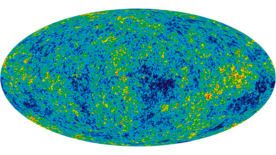 |
Charles Bailyn
A. Bartlett Giamatti Professor of Astronomy and Physics
KT 531
charles.bailyn@yale.edu
203-432-3022
Research Website |
Experimentalist Current Projects: Observations of stellar mass blackholes, SMARTS consortium
|
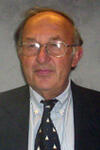 |
Charles Baltay
Eugene Higgins Professor Emeritus of Physics
WL 213
charles.baltay@yale.edu
+1 (203) 432-3386
Research Website |
Experimentalist Current Projects: Dark Energy Spectroscopic Instrument (DESI), Quasar Equatorial Survey Team (QUEST) Camera
|
 |
Paolo Coppi
Professor of Astronomy
KT 453
paolo.coppi@yale.edu
203-432-3014
Research Website |
Experimentalist Current Projects: High-Energy Plasma/Radiation Processes, Cosmological VHE Particle Propagation, Blazars and VHE Astronomy, Black Hole/Neutron Star Binaries, Early Star and Structure Formation, Gas-Mediated Black Hole Mergers, QUEST Large Area Driftscan Survey, Yale=Catan Deep X-Ray/Optical/NIR Survey
|
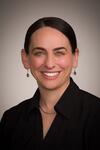 |
Marla Geha
Professor of Astronomy and of Physics
STN 215
marla.geha@yale.edu
+1 (203) 432-5796
Research Website |
Experimentalist Current Projects: Dwarf Galaxies and Near Field Cosmology
|
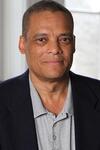 |
Larry Gladney
Phyllis Wallace Dean of Diversity and Faculty Development in the Faculty of Arts and Sciences, Professor of Physics
Warner House 301
larry.gladney@yale.edu
203-432-6814 |
Experimentalist |
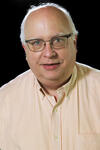 |
Steve Lamoreaux
Eugene Higgins Professor of Physics
SPL 61 / WL-EAL 326
steve.lamoreaux@yale.edu
203-432-5276
Research Website |
Experimentalist Current Projects: Haloscope At Yale Sensitive to Axion CDM (HAYSTAC), Electric dipole moment, Casimir effect
|
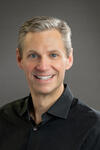 |
Konrad Lehnert
Eugene Higgins Professor of Physics
SPL 68A
konrad.lehnert@yale.edu |
Experimentalist |
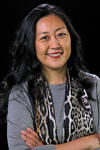 |
Reina Maruyama
Professor of Physics and Astronomy
WL 209
reina.maruyama@yale.edu
203-432-3362
Research Website
Pronouns: She/her/hers |
Experimentalist Current Projects: Cryogenic Underground Observatory for Rare Events (CUORE), IceCube Neutrino Obervatory, CUORE Upgrade with Particle IDentification (CUPID), ATLAS, COSINE-100, DM-Ice, Haloscope At Yale Sensitive To Axion CDM (HAYSTAC)
|
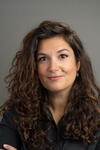 |
Chiara Mingarelli
Assistant Professor
KT 445
chiara.mingarelli@yale.edu |
Theorist Current Projects: NANOGrav Collaboration
|
 |
Daisuke Nagai
Professor of Physics and of Astronomy
KT 451
daisuke.nagai@yale.edu
203-909-4266
Research Website
He/him/his |
Theorist Current Projects: Theoretical & Computational Cosmology: Dark Matter, Dark Energy, Galaxy Clusters, Galaxy Formation & Evolution, Cosmological Simulations, Data Science
|
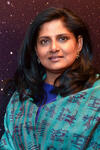 |
Priyamvada Natarajan
Joseph S. and Sophia S. Fruton Professor of Astronomy and Professor of Physics; Chair Astronomy; Chair Women Faculty Forum
STN 217
priyamvada.natarajan@yale.edu
203-436-4833
Research Website |
Experimentalist Current Projects: Gravitational Lensing, Clusters of Galaxies as Astrophysical Laboratories, Black Hole Physics, Binary Black Holes, Issues in Galaxy Formation, History & Philosophy of Science
|
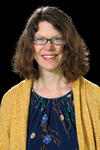 |
Laura Newburgh
Associate Professor of Physics
WL 210
laura.newburgh@yale.edu
203-432-9168
Research Website
She/her/hers |
Experimentalist Current Projects: 21cm Radio Instrumentation to measure Large Scale Structure and Dark Energy - Canadian Hydrogen Intensity Mapping Experiment (CHIME), The Hydrogen Intensity Mapping and Real-time Analysis eXperiment (HIRAX)
Early Universe Cosmology: The Cosmic Microwave Background - Atacama Cosmology Telescope (ACT), Simons Observatory
|
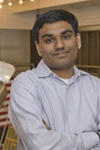 |
Nikhil Padmanabhan
Associate Professor of Physics
KT 449
nikhil.padmanabhan@yale.edu
203-432-9950 |
Theorist |
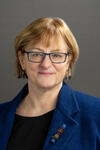 |
Meg Urry
Israel Munson Professor of Physics
KT 533
meg.urry@yale.edu
+1 (203) 432-5997
Research Website
She/her/hers |
Theorist & Experimentalist Current Projects: Hidden Supermassive Black Holes, AGN host galaxies, Unification of AGN, Supermassive Black Holes in AGN and the “Grand Unification” Hypothesis, Blazars, Kiloparsec-scale jets
|
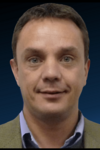 |
Frank van den Bosch
Professor
STN 320
frank.vandenbosch@yale.edu
+1 (203) 432-0196
Research Website |
Theorist Current Projects: Dynamical Friction, Galaxy Assembly Bias and Galactic Conformity, Precision Cosmology with Galaxies, Statistics of Dark Matter Substructure, Coming of Age in the Dark Sector, Constraining Halo Mass with Satellite Kinematics
|
 |
Pieter van Dokkum
Sol Goldman Family Professor of Astronomy and Professor of Physics
KT 537
pieter.vandokkum@yale.edu
+1 (203) 432-3019
Research Website |
Experimentalist Current Projects: 3D-HST, COSMOS-DASH, Dragonfly
|
